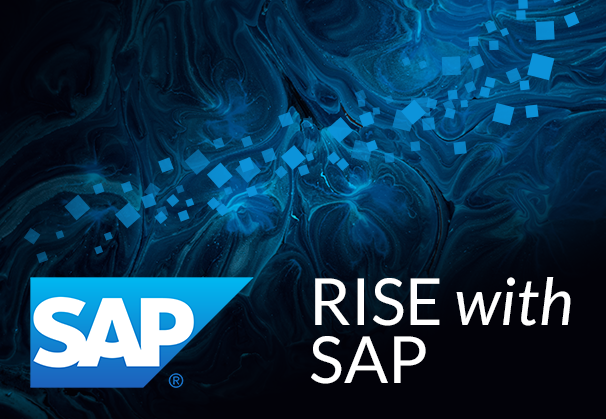Digital transformation isn’t something companies plan to get around to someday. It’s already happening, and if you are not on board, you are playing catch-up.
That’s where SAP RISE enters the picture. It’s SAP’s all-in-one deal that pulls together cloud ERP, infrastructure, analytics tools, migration services—you name it—into a single contract.
But what does this mean for your business? How should you navigate the transition complexities?
This guide aims to demystify SAP RISE and provide clear, actionable insights to ensure a smooth and successful transformation journey.What is SAP RISE?
If you have worked with SAP in the past, you probably remember how complex it used to be—different vendors, separate contracts, multiple touchpoints. It felt like herding cats, didn’t it?
SAP RISE flips that. It’s a bundled setup that gives you SAP S/4HANA Cloud (that’s their cloud-based ERP), the infrastructure it runs on, migration tools to move your data over, and managed services to keep things ticking post-launch. All wrapped into a single offering.
Instead of chasing vendors or negotiating five different contracts, you deal with one. That’s it. It takes the mess out of modernization.
What Makes It Worth It?
Let’s run through the practical details—the real reasons businesses are giving this a serious look.
- You Don’t Have To Piece It All Together
Cloud migration usually involves lots of moving parts. With SAP RISE, everything from the tech stack to support comes pre-arranged. Less legwork, fewer unknowns. Your IT team will thank you.
- You Pick the Cloud You Want
You are not boxed into just SAP’s infrastructure. It supports deployment on major cloud platforms like Google Cloud, AWS, Microsoft Azure, etc. That means you can keep what’s already working and expand without a total reset.
- Built-in Smarts (Automation, AI, That Stuff)
This is not just about hosting data in the cloud. It’s about doing more with that data. You get tools that help automate stuff, catch inefficiencies, and make decisions based on real numbers.
So, fewer manual errors, faster reporting, and actual insights instead of just dashboards.
- Budgeting Gets Simpler
Everything’s rolled into one subscription-style payment. No surprise costs for infrastructure. No juggling between service providers. Just one line item on your budget spreadsheet. That kind of predictability is rare in IT projects.
- You Are Not Left Behind on Innovation
New features, security patches and updates come as part of the package. You do not need to plan separate upgrade cycles every few years. It just happens in the background—so your system keeps improving without disrupting the whole business.
- Support You Don’t Have To Babysit
You get guaranteed uptime, proactive support, and less pressure on your in-house IT team. SAP takes care of performance and maintenance, so your team can stop firefighting and start focusing on things that actually move the needle.
But It’s Not All Smooth Sailing
Let’s not pretend it’s magic. There are challenges, and you should know what they are going in.
- Old integrations might not play nice. If you have custom systems or third-party add-ons, be ready for some cleanup. Migration could get messy.
- You will still need in-house know-how. This is not a set-it-and-forget-it situation.
Tasks like system refreshes or client copies may need to be initiated
huge difference. - People will resist change. Every new platform changes how teams work. You’ll need to prep your people, train them properly, and handle that emotional side of tech change. Otherwise, adoption stalls.
The Role of a Solid SAP Consultant
If you are thinking about doing this alone—don’t.
Rolling out SAP RISE without experienced help is like deciding to build your own house because you watched a couple of YouTube videos. You need someone who knows where the pitfalls are and how to get around them.
A great SAP consultant will:
- Audit your current systems and help you figure out if you’re even ready for this move.
- Customize the setup so it actually fits your business (instead of forcing your team to change everything).
- Handle migration without losing critical data or breaking processes.
- Coach your people through the transition. This includes training and internal communication. It matters more than you think.
- Stick around after go-live to help tweak things, monitor performance, and keep things running smoothly.
Long story short – they keep the project from going off the rails.
How To Get Your Business Ready
If you are seriously considering SAP RISE, don’t just call a meeting and say, “We’re moving to the cloud.” Start with the basics.
- Figure out what you want to fix. Be honest—what is not working in your current setup? What do you actually want to improve to better fit your business goals?
- Look under the hood. Do a readiness assessment. Look at your data, your tech stack, your team. Are you really in shape to make this shift?
- Bring stakeholders in early. This is not just an IT project. Finance, operations, HR—they all need to have a say.
- Plan for integration. Work with your SAP consultant to map everything out. Make sure your systems are talking to each other smoothly after the migration.
- Get serious about training. If your employees are not confident using the new system, the project fails. .Implement change management strategies, encourage employee feedback and provide continuous support for smooth adoption.
- Build long-term support. Once the platform is live, who will manage it? Consider system maintenance, performance monitoring, and continuous improvement to ensure sustained success.
Final Thought
SAP RISE is not a silver bullet—but it is a smart, strategic way to move your business forward. And that means planning ahead, involving your team, and working with someone who’s been through it before—like a trusted SAP consultant.
The real question isn’t should you modernize. It’s—are you doing it the smart way?
